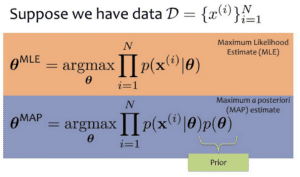The Tangled Wire Dilemma: A Picture for Complex Problems
Imagine being handed a tangled ball of wires and tasked with fixing the connection. You carefully trace one wire, hoping to solve the issue, only to make the knot worse.
This scenario illustrates a critical challenge in organizations today: the tendency to oversimplify complex problems and expect quick fixes for deeply rooted issues.

Why Short-Term Contracts Fail to Solve Complex Problems
The Frustration of Temporary Roles
If you’ve ever been hired on a short-term contract, you’re likely familiar with this scenario: a vague, surface-level problem description is handed to you, accompanied by unrealistic expectations for immediate results.
But let’s confront reality: what you’re dealing with isn’t a simple issue—it’s a mess, a chaotic network of interconnected problems that no quick fix can resolve.
The Impact on Public Sector Professionals
According to the latest report of Asutralian Bureau of Statistics published in August 2024, In Australia, 4.2% of employees were employed on a fixed-term contract , 20% of employees considered their job to be casual and there were 1.1 million independent contractors (7.5% of all employed).This over-reliance on temporary roles is having a measurable impact on productivity and systems stability.
The 2022 Productivity Report of Australia highlighted how short-term contracts contribute to stagnation by discouraging long-term planning, reducing institutional knowledge retention, and prioritizing immediate results over meaningful solutions. This trend is particularly prevalent in the public sector, where:
- Limited time forces professionals to focus on surface-level fixes.
- Resource constraints prevent systemic analysis.
- Short-term authority hinders professionals from addressing root causes.
Short-term engagements often result in managing symptoms rather than implementing sustainable solutions, echoing insights from Systems Thinking in the Public Sector, which critiques how fragmented approaches undermine meaningful progress.
A Real-World Encounter: Facing Mister Mismatch at Stockland
I am unexpectedly frank about how things happen in organisations today. In September 2022, I came face-to-face with Mister Mismatch, a master of chaos and contradiction, during my tenure at Stockland. Tasked with resolving discrepancies across TRAC, CTS, Salesforce, and SAP systems, I initially believed I was addressing a straightforward issue.
But Mister Mismatch had other plans. He thrived in the disarray, weaving his misalignment into every corner of the systems. TRAC whispered one number, while SAP boldly contradicted it. CTS, smug and elusive, offered partial truths, leaving Salesforce to fill the gaps—but Salesforce’s version was different altogether.
What a tangled knot it was! And yet, this knot wasn’t just a physical metaphor—it reflected the deeply entrenched and entangled systems at play. Mister Mismatch’s web of dysfunction wasn’t just a collection of errors. It was a living, breathing system, crafted to resist clarity and defy resolution. Each attempt to unravel one thread led to new contradictions, new complications, and a deeper understanding of the scale of the challenge—a challenge that demanded pro-solution thinking to counter anti-progress inertia.
To take on Mister Mismatch, I had to:
- Investigate deeply, tracing the origins of each misalignment.
- Rally allies, building a coalition across teams to confront his pervasive influence.
- Strategize holistically, recognizing that his chaos couldn’t be resolved piecemeal—it required systemic transformation.
This encounter reinforced a principle I’ve encountered in Seddon’s work: fixing isolated parts of a system only perpetuates its dysfunction. Tackling such issues demands a commitment to holistic solutions that address the root of the problem, not just its symptoms.
The Reality of Messes: Why Quick Fixes Fail
Understanding the Nature of a Mess
A “mess” isn’t just a bigger problem—it’s a system of interconnected challenges. Unfortunately, many organizations treat messes as isolated issues, failing to address their systemic nature.
As management theorist Russell Ackoff explained, “The solution must be greater than the mess itself.” This means tackling problems comprehensively, rather than breaking them into smaller, disconnected fixes.
The Short-Term Thinking Trap
When I proposed a holistic solution at Stockland, my manager hesitated, suggesting that the solution should be “smaller” than the problem. This mindset reflects the dangers of short-term thinking, where complexity is undervalued, and superficial outcomes are prioritized over meaningful results.
The Cost of Inaction: Why Systems Thinking Matters
The Risks of Ignoring Systemic Issues
If organizations continue to overlook systemic challenges, they’ll perpetuate a cycle of:
- Temporary fixes
- Misdiagnosed root causes
- Short-lived results
Your Role in Breaking the Cycle
This is not the time for passivity—it is the time for action. By adopting systems thinking, you can:
- Deliver solutions that are effective and enduring
- Showcase the value of holistic problem-solving
- Ensure your expertise is recognized and appreciated
Failing to embrace this approach risks leaving your contributions undervalued, while others gain recognition for solving issues holistically.
Your Opportunity: Untangle the Present and Ignite Transformation
It’s time to escalate this matter. Rally your voice, and engage those with the power to effect change:
- Speak with your supervisor about systemic challenges and advocate for a strategic, long-term approach.
- Open the dialogue with your HR department, transformation managers, or change managers—those responsible for shaping organizational culture and processes.
- Refuse to let temporary fixes dictate the future of your work or your organization.
- Connect with us through our website for more insightful weblogs and business support
Together, we can break free from the chains of short-term thinking and create a movement for sustainable, meaningful change. Let’s turn complexity into clarity and make transformation a reality.









1 Comment
Your point of view caught my eye and was very interesting. Thanks. I have a question for you.